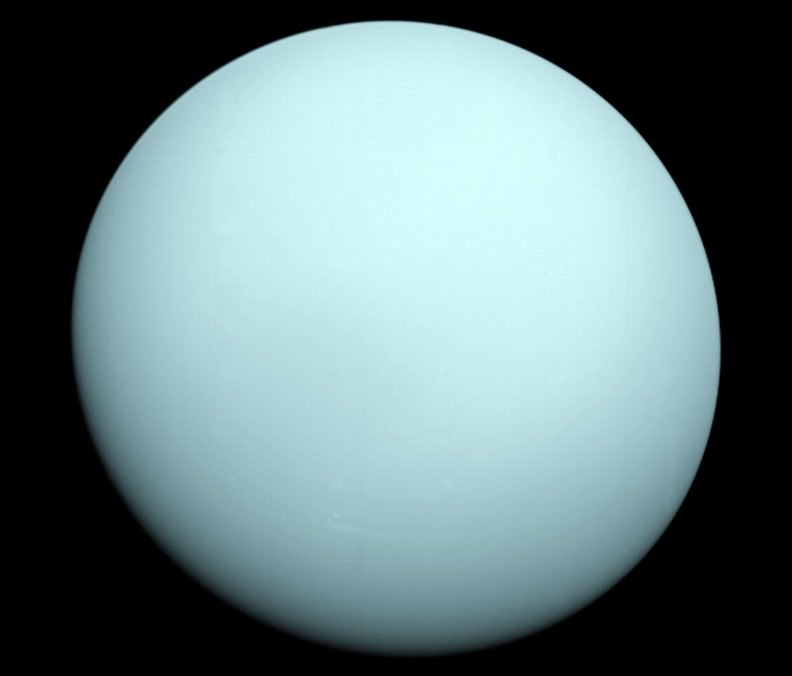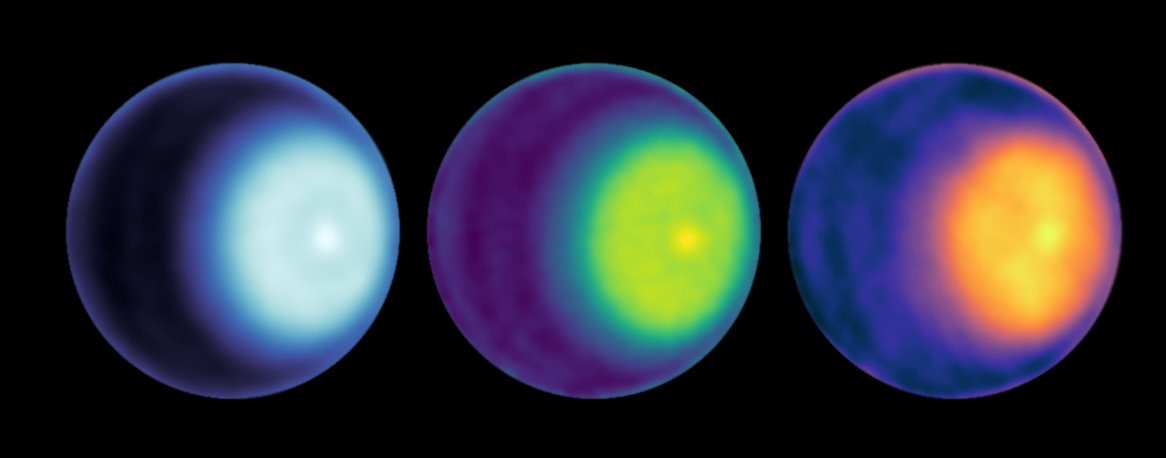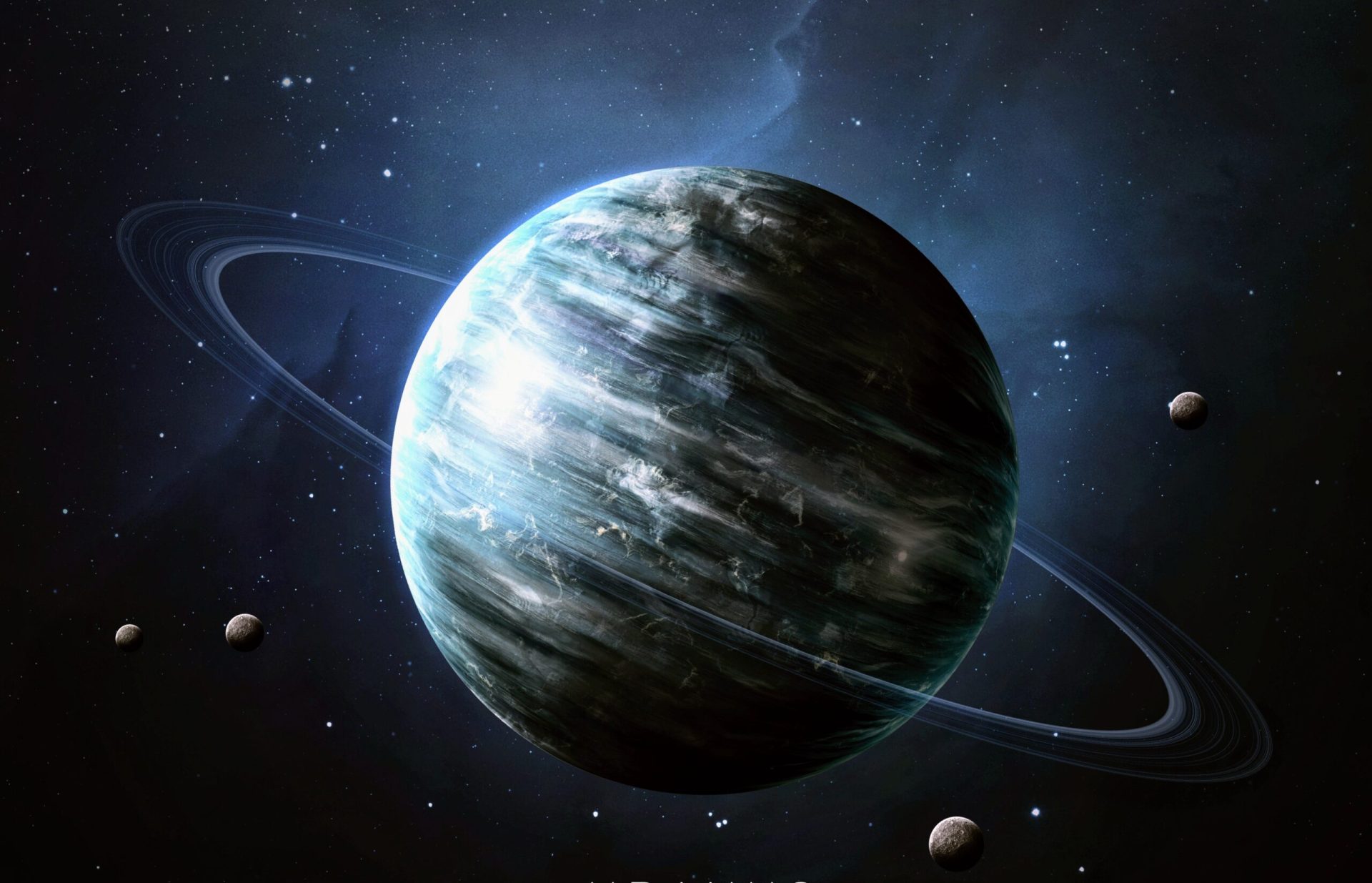Uranus takes 84 years to orbit the Sun, and so that last time that planet’s north polar region was pointed at Earth, radio telescope technology was in its infancy.
But now, scientists have been using radio telescopes like the Very Large Array (VLA) the past few years as Uranus has slowly revealing more and more of its north pole. VLA microwave observations from 2021 and 2022 show a giant cyclone swirling around this region, with a bright, compact spot centered at Uranus’ pole. Data also reveals patterns in temperature, zonal wind speed and trace gas variations consistent with a polar cyclone.

Uranus as seen by NASA’s Voyager 2. Credit: NASA/JPL
Scientists have long known that Uranus’ south pole has a swirling feature. When Voyager 2 flew past Uranus in 1986, it detected high wind speeds there. However, the way the planet was tilted did not allow Voyager to see the north pole.
But the VLA in New Mexico has now been studying Uranus the past several years, and observations collected in 2015, 2021, and 2022 were able to peer deep into Uranus’ atmosphere. The thermal emission data showed that circulating air at the north pole seems to be warmer and drier, which are the hallmarks of a strong cyclone.

NASA scientists used microwave observations to spot the first polar cyclone on Uranus, seen here as a light-colored dot to the right of center in each image of the planet. The images use wavelength bands K, Ka, and Q, from left. To highlight cyclone features, a different color map was used for each. Credit: NASA/JPL-Caltech/VLA.
“These observations tell us a lot more about the story of Uranus. It’s a much more dynamic world than you might think,” said Alex Akins of NASA’s Jet Propulsion Laboratory in Southern California, who is lead author of a new study published in Geophysical Letters. “It isn’t just a plain blue ball of gas. There’s a lot happening under the hood.”

The researchers said the cyclone on Uranus is similar to the polar cyclones observed by the Cassini mission at Saturn. With the new findings, cyclones (which rotate in the same direction their planet rotates) or anti-cyclones (which rotate in the opposite direction) have now been identified at the poles on every planet in our solar system that has an atmosphere. The researchers said this confirms a broad truth that planets with substantial atmospheres – whether the worlds are made of rock or gas – all show signs of swirling vortexes at the poles.
Uranus’ north pole is now in springtime. As it continues into summer, astronomers hope to see even more changes in its atmosphere.





